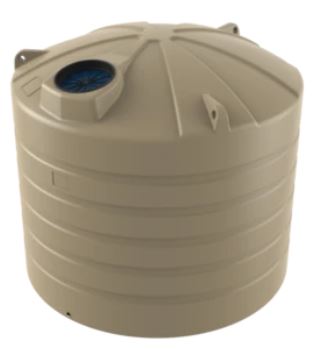The bigger tank you get the cheaper the cost of storage per kilolitre (1,000L or 1kL) but you don’t want to buy one too big!
Not only will it cost more, but it will take up more space on your block.
How Much Rainfall is There in Your Area?
The first thing you need to do is find out what is the average rainfall for your area.
Remember that average rainfalls can change over quite small distances. (For example the rainfall in some Melbourne’s Western suburbs can be 30% lower than parts of the Eastern suburbs).
If you go to this web page and enter any Australian town it will give you the nearest weather stations.
http://www.bom.gov.au/climate/data/
For other counties try your national weather centre.
Once you have selected a weather station click on the get data button and you will get heaps of data. What you want is the mean monthly rainfall in mm.
This should look something like the table below, which is the rainfall for Werribee Racecourse, my local Weather station.
|
Jan |
Feb |
Mar |
Apr |
May |
Jun |
Jul |
Aug |
Sep |
Oct |
Nov |
Dec |
Annual |
|
40.1 |
38.8 |
34.9 |
45.3 |
48.9 |
34.3 |
40.1 |
46.6 |
52.2 |
59.7 |
49.6 |
45.0 |
542.4 |
Remember the above figures are the mean so for example one year there may be a summer thunderstorms and January may get 80mm of rain, the next year in a drought it may get no rain at all.
How Much Rain Will You Get ?
Now you need to measure the roof plan area that will be drained to the tank/s in m2.
Multiply the area in m2 by the rainfall in mm for each month and divide by 1,000 will give you the volume of rain in kilolitres.
For example; An 180 m2 roof in Werribee Household will get a mean of 97.6kL per year. (The bottom row of the table below shows the monthly means as well as the annual mean)
|
Jan |
Feb |
Mar |
Apr |
May |
Jun |
Jul |
Aug |
Sep |
Oct |
Nov |
Dec |
Annual |
|
|
mm |
40.1 |
38.8 |
34.9 |
45.3 |
48.9 |
34.3 |
40.1 |
46.6 |
52.2 |
59.7 |
49.6 |
45.0 |
542.4 |
|
kL |
7.2 |
7 |
6.3 |
8.1 |
8.8 |
6.2 |
7.2 |
8.4 |
9.4 |
10.7 |
8.9 |
8.1 |
97.6 |
The above totals are theoretical!
In practice you will usually collect 80-90% of these amounts.
This is due to losses through evaporation, and any first flush filtering systems.
The next question is how much water do you need?….To find out see Post 2 on this subject
For similar posts see Sustainability
